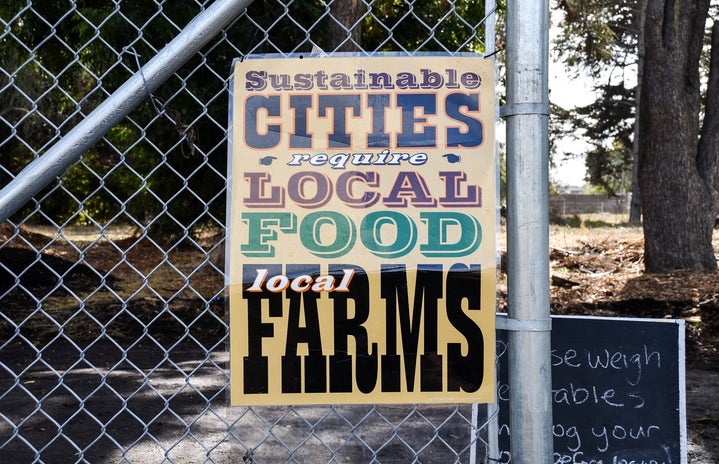If you keep up with the issues that surround climate change and the environment, you may have heard the term “carbon footprint.” If you’re not aware of what this is, your carbon footprint is the total amount of greenhouse gases that are generated by your actions. The United States, on average, has the highest carbon footprint per person (sixteen tons), while the global average is four tons.
Living as a college student with limited funds can be difficult, but being more sustainable can be a lot easier too. Here are a few tips for reducing your carbon footprint, which can be calculated here to help you gain an idea of what things you can be more aware of.
1. go thrifting
Thrifting can be a time consuming process if you tend to be picky about clothes or are looking for a specific article of clothing, but the results are worth it. Not only are you shopping sustainably by reusing clothes and other items, you’ll also be saving a lot of money. Most clothes at thrift stores are sold at a reduced price from what they were originally purchased for. Thrifting is another way to find unique pieces you may not usually find at stores that carry popular brands.
As Gen Z has popularized the notion of shopping second hand, thrift stores are easier to come across in each city. Stores like GoodWill, Salvation Army, and Twice is Nice are just a few of the many popular consignment stores across the U.S. Many cities even feature local thrift stores of their own, which is another way to support small businesses while remaining sustainable.
2. BUY A REUSABLE STRAW
The use of alternatives to plastic straws like bamboo, pasta, and paper straws have recently become more popular, but might not always be the most practical. Investing in a portable and reusable straw could be the new game changer. These straws tend to be collapsable metal or silicone straws, making them compact and easy to bring around campus. They also usually come with their own cleaning equipment to help facilitate taking care of your straw and prepare it for its next use.
Reusable straws are cheap and the environment will benefit from the reduction in paper and plastic straws little by little. Avoiding purchasing disposable straws will save money in the long run and keep your body safe from harmful microplastics and toxins that tend to leach out of plastic straws.
3. take advantage of public transportation
As a freshman, on many college campuses you may have no choice but to resort to walking and taking public transportation to the destination you are trying to reach. While cars are practical, fossil fuels like gas are huge contributors to the GHGs found in our atmosphere. Each gallon of gasoline burned creates about 20 pounds of GHGs, which contributes directly to climate change. It may not be an option for some college students to avoid having a car on campus, but carpooling with friends or other students whenever possible, as well as taking public transportation in the area can reduce CO2 emissions by 45%. Biking is another great option for students who are in more rural areas or prefer to get a little exercise in their commute as well.
4. Grow a mini garden
Similar to caring for plants or succulents in a dorm or appartment space, students can also start their own garden with herbs like rosemary, and other medicinal plants like peppermint or chamomile. Growing and tending plants is proven by experts to increase happiness and personal satifaction. This is an easy activity to start and make your college dorm or living space feel more like home. All you have to do is find a container or pot, soil, seeds, and give your pants proper sunlight and water each day.
If you’re surviving off of dining hall food or need something to spice up your meals, growing your own spices is a great way to bring out more flavor. You can even store your herbs and other plants that produce fruits or vegetables in your dorm for later consumption and use.
5. prioritize using a reusable water bottle
It may sound like a no brainer at this point to carry around your own water bottle, however, Americans purchase 50 billion water bottles a year, which is roughly 13 bottles per month for every individual. By using your own water bottle, not only are you more likely to stay hydrated but you’ll also save 156 plastic bottles a year. Around 14 million tons of plastic end up in our oceans every year, and by reducing your contributions to plastic usage, you can help make our seas a little healthier.
Using your own water bottle also keeps you healthy too. In a study in 2018, researchers found that microplastics were found in over 11 bottled water brands and in 259 bottles as well. Microplastics can end up in lungs, breast milk, and even different kinds of tissues, and can interfere with our digestive and reproductive systems in negative ways. Plastic is difficult to avoid, but using your own water bottle will limit the microplastics entering your system as well.


